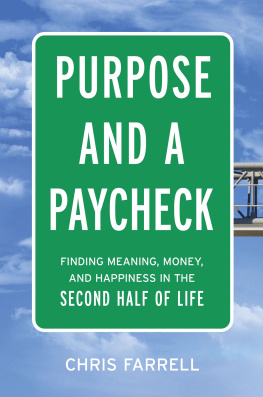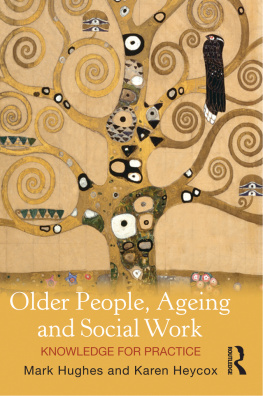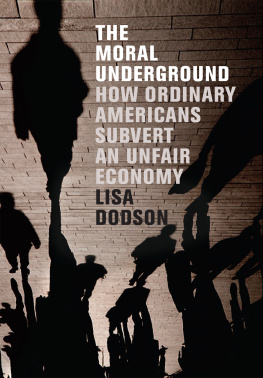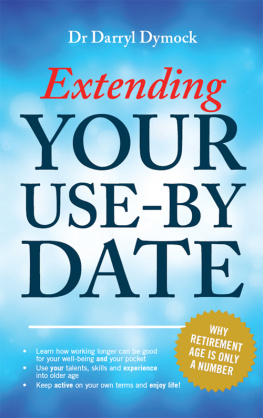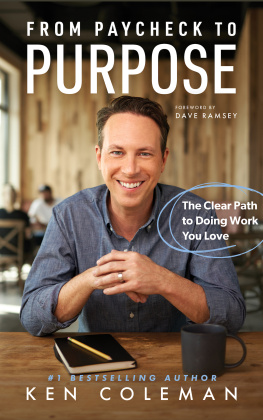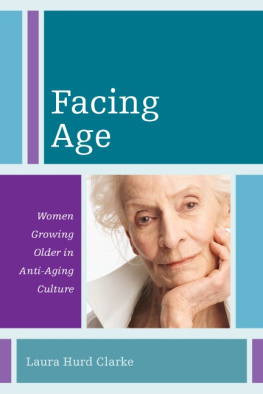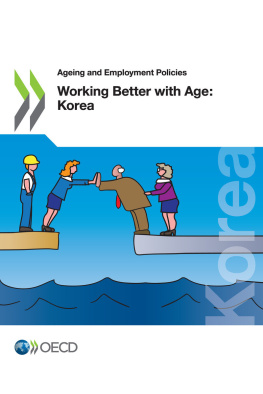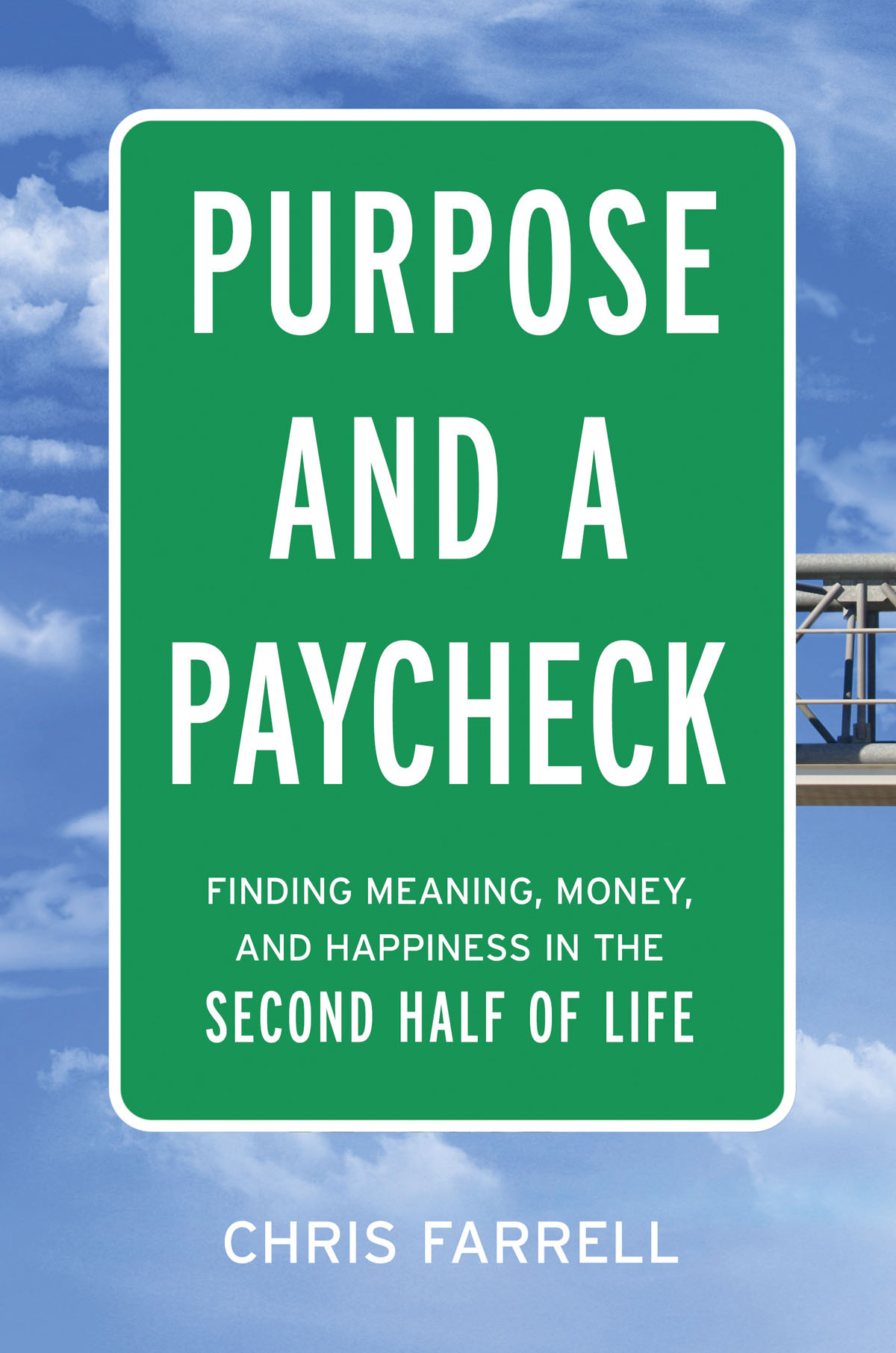Information about External Hyperlinks in this ebook
Please note that endnotes in this ebook may contain hyperlinks to external websites as part of bibliographic citations. These hyperlinks have not been activated by the publisher, who cannot verify the accuracy of these links beyond the date of publication.
2019 Chris Farrell
All rights reserved. No portion of this book may be reproduced, stored in a retrieval system, or transmitted in any form or by any meanselectronic, mechanical, photocopy, recording, scanning, or otherexcept for brief quotations in critical reviews or articles, without the prior written permission of the publisher.
Published by HarperCollins Leadership, an imprint of HarperCollins.
Book design by Elyse Strongin, Neuwirth & Associates.
978-0-8144-3962-3 (eBook)
Epub Edition December 2018 9780814439623
Library of Congress Control Number: 2018960961
978-0-8144-3961-6
Printed in the United States of America
18 19 20 21 22 LSC 10 9 8 7 6 5 4 3 2 1
This book is dedicated to Richard, Billy, Andrew, and Ron for half a century of friendship and the prospect of many more adventures and long conversations.
This book is also dedicated to Rose Veronica Farrell. I cant wait to watch the future unfold through her eyes. The world already is a much better place.
CONTENTS
Guide
This is not a moment, its the movement.
ALEXANDER HAMILTON (Lin-Manuel Miranda)
T he association of old age with inevitable decline runs deep. To carry on with workor indeed with anything more demanding than afternoon lectures, a movie, and an early dinnerduring the traditional retirement years is cute at best and depressing at worst.
Economist John Kenneth Galbraith called these commonplace reactionssurprise laced with condescending admiration or misplaced concernthe Still Syndrome.
The Still Syndrome is the design by which the young or the less old daily assail the old. Are you still well? Are you still working? I see that you are still taking exercise. Still having a drink? As a compulsive literatus I am subject to my own special assault, I see you are still writing. Your writing still seems pretty good to me. The most dramatic general expression came from a friend I hadnt seen for some years: I can hardly believe youre still alive!
Galbraith wrote the essay Notes on Aging when he was 90 years old. He stayed active and engaged until he died seven years later.
No one would think decline on meeting Luanne Mullin, age 71. Mullin has assembled a portfolio of activities in recent years, some paying gigs and others volunteer jobs. Life is full, she says, laughing.
Thats an understatement. Among her jobs with incomes are project manager for a nonprofit organization in Marin County, California, that focuses on older adults and the disabled; her own coaching business and workshops; and acting gigs in the backgrounds of television and movies. (She was one of the people running down San Franciscos Russian Hill as the building behind crumbled during the disaster film San Andreas.)
Mullin has a portfolio of volunteer ventures, too. Shes a volunteer leader for the mature student organization at the College of Marin, focusing on lifelong learning. She helps produce a local documentary film series. She organizes salons bringing people together to discuss critical topics. I do feel lucky, she says. I am in the right place and at the right time to do a lot of really neat things.
I wasnt surprised to learn that Mullin had created a full portfolio combining purpose and a paycheck. That seems to be the story of her life.
We first met in 2013 on the Mission Bay campus of the University of California, San Francisco (UCSF). The area was once dominated by shipyards and industrial businesses. The university and biotech offices now hold sway. Mullin was a mediator and project manager on campus. She was almost done with her job overseeing the construction of an 8,000-square-foot laboratory for university scientists when we got together.
Her career had been an eclectic mix of jobs and occupations. She moved with the grace of the dancer she had been early in her career. She later became head of marketing for a dance company, opened her own theater company in Boston, and ran a recording studio in San Francisco.
As her time at UCSF was coming to an end, she was looking for a new adventure, a different challenge. OK, whats my next career? she wondered. What do I want to do thats fulfilling?
Like many people working in what is still considered the traditional retirement years, Mullin needs to work for an income and wants to work for engagement. Not one reason or the other. Both purpose and a paycheck. Earning an income helps pay the bills.
I need a paycheck. I will always need a paycheck, she says. Im OK with that. A paycheck puts a roof over my head and shows that I am needed, wanted, and worth paying.
Weve talked several times since our first meeting, including at an Aging in America conference held in downtown San Francisco in 2018. She enjoys her work and volunteer activities. They often involve solving problems and designing solutions. Her work keeps her mentally sharp and physically active. Paid work and volunteering are how she stays connected to a wide circle of friends, colleagues, and clients. Many of us are looking for purpose, she says.
Mullin is still searching for her calling. She believes there is more for her to accomplish, a commitment that will make a bigger difference to her sense of self and to her community. She hasnt found her calling yet. She continues to experiment and test new paths. I keep thinking I will find one big thing that I am passionate about and give my life to it, she says. I dont know what it is. Maybe doing all these things will lead me to that one thing.
Mullin has plenty of company in her entrepreneurial quest. Stories like hers are increasingly common with the aging of the population. The demographics of aging ranks as one of the most significant long-term forces shaping the U.S. economy and society, alongside globalization, automation, and climate change.
The numbers are striking. The U.S. Census Bureau forecasts that those individuals 65 years and older will account for more than 21 percent of the U.S. populationabout 73 millionin 2030. The comparable figures in 2016 were 15 percent, or some 49 million. Put somewhat differently, roughly 10,000 baby boomersthe generation born between 1946 and 1964are celebrating their 65th birthday every day until 2030. That year, the surviving members from the leading edge of the boomer generation will turn 85.
Older Americans are also living longer, on average. Thanks to improvements in sanitation, nutrition, education, and medical care, life expectancy for people reaching age 65 now averages 19.4 years. Thats up from 13.9 years in 1950. The biggest impact on the nations aging comes from Americans having fewer children. The U.S. fertility rate has dropped to record lows. Taken all together, the Census Bureau predicts the number of people over 65 years of age will outnumber children under age 18 by 2035 for the first time in U.S. history.
The combination of an aging population and the Still Syndrome fuels ominous economic forecasts. The typical doom-and-gloom story runs along these lines: Too few young workers will have to support too many dependent elderly. Older Americans will be forced to cut back on spending because they havent saved enough to maintain their lifestyle. The wellsprings of creativity, innovation, and risk-takinglong linked with youthwill dim with rising numbers of elders. The economy is slipping into a permanent state of slow-growth or secular stagnation at best, and possibly worse.

